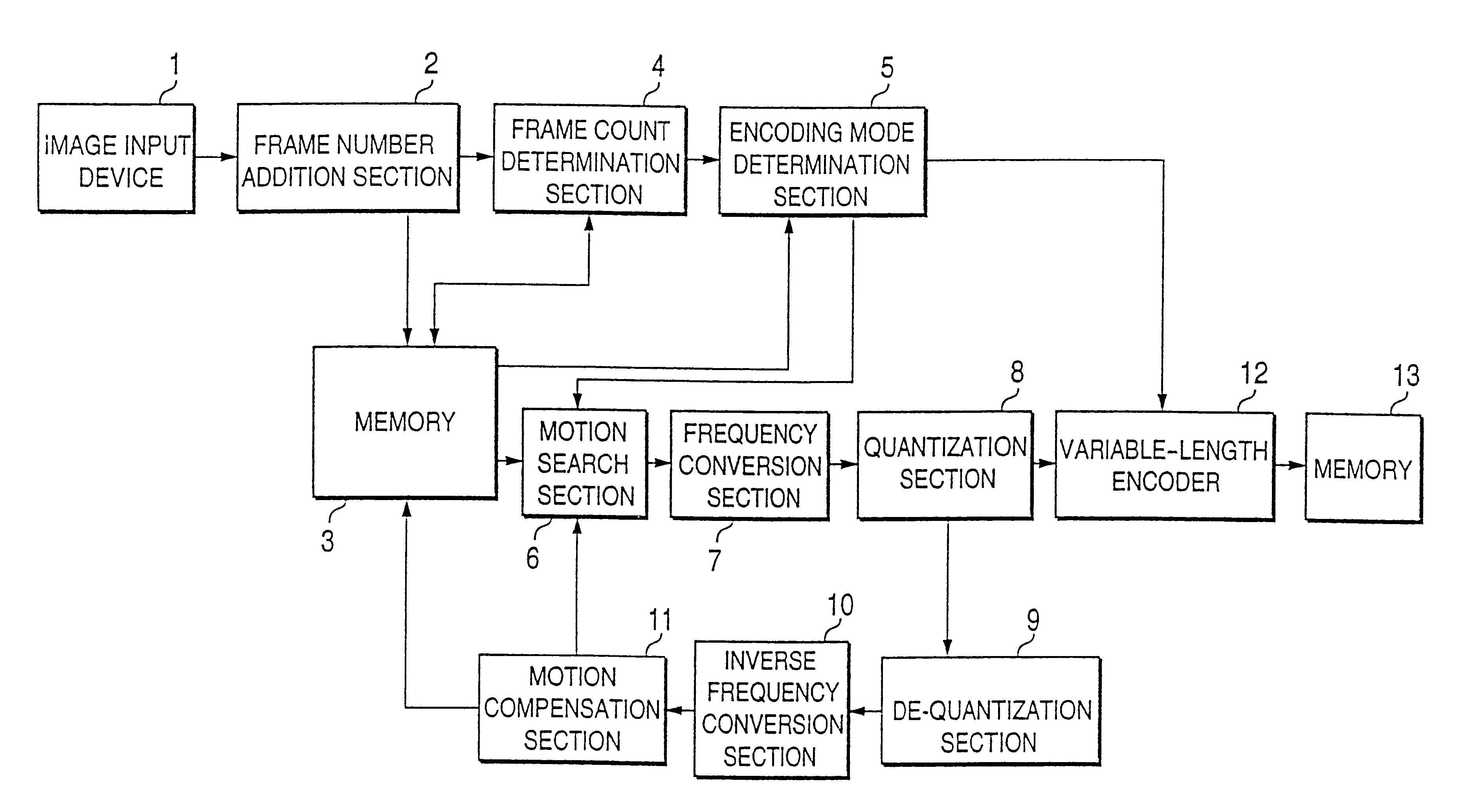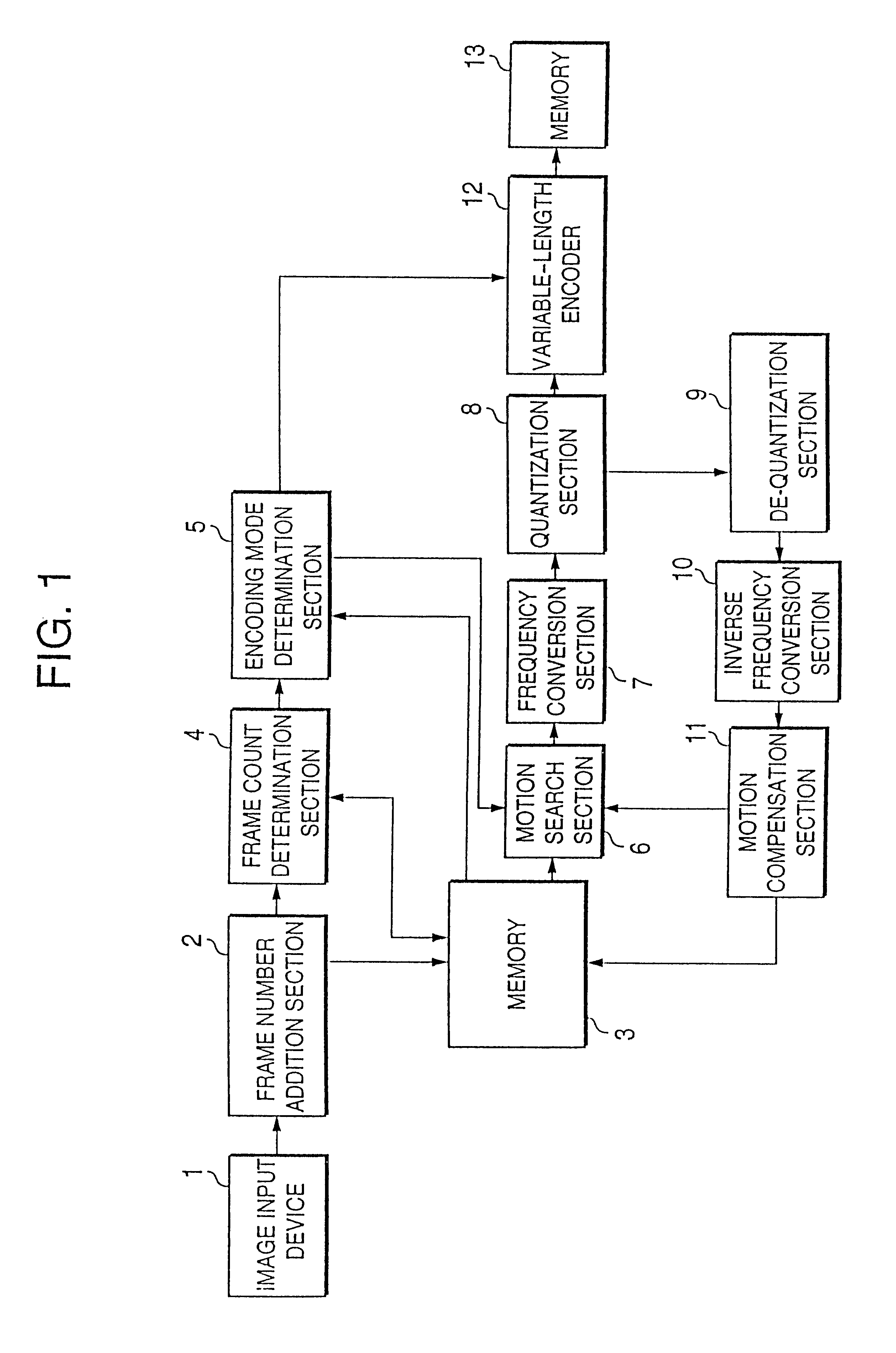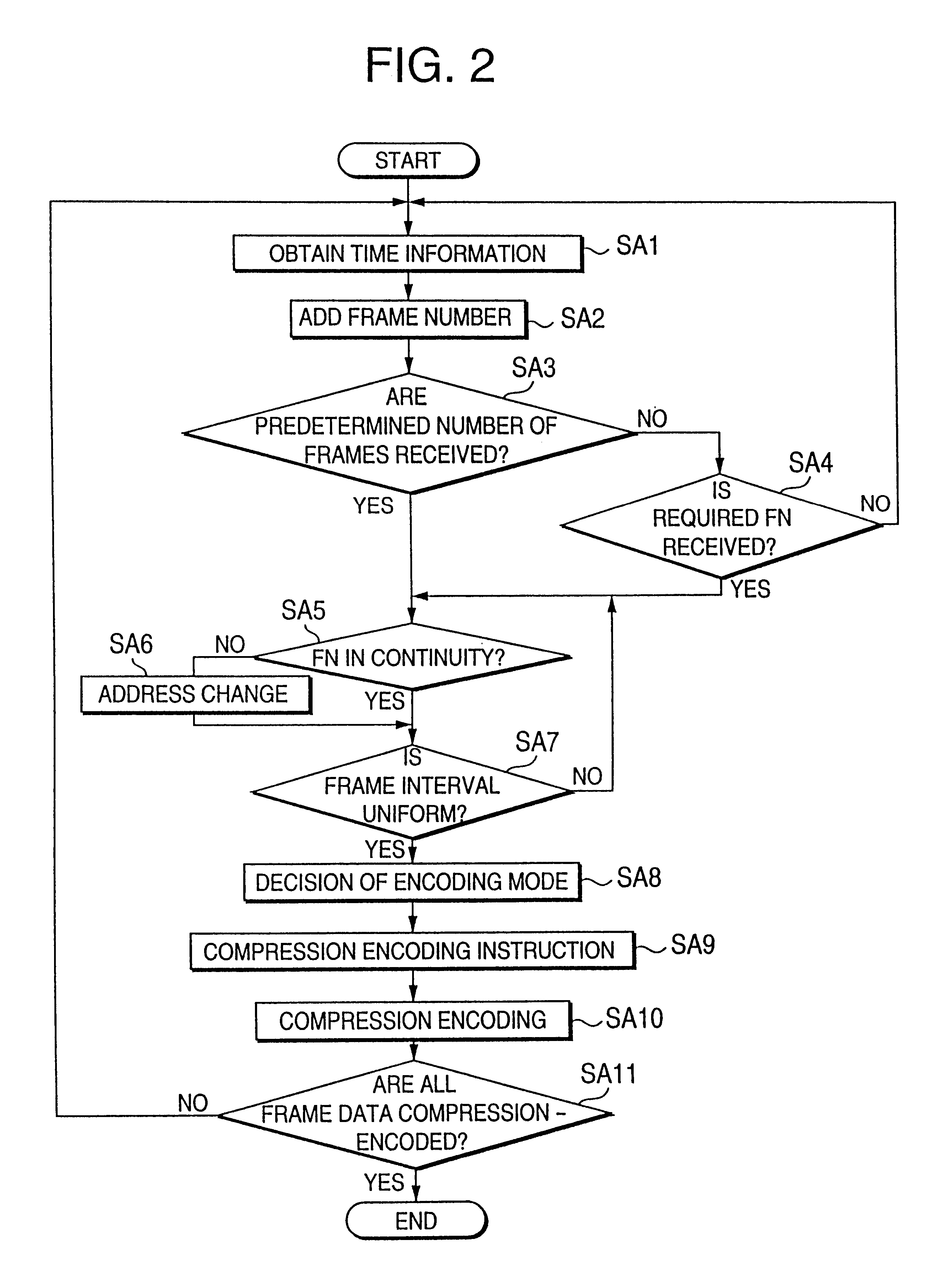Moving-picture compressing technique
a compression technique and picture technology, applied in the field of moving picture compression technique, can solve the problems of developing a time discrepancy, reducing the speed of receiving picture data, and delay in the time information at the receiver or playback apparatus
- Summary
- Abstract
- Description
- Claims
- Application Information
AI Technical Summary
Benefits of technology
Problems solved by technology
Method used
Image
Examples
first embodiment
FIG. 1 is a block diagram of an electrical arrangement of a moving picture compressing apparatus according to the present invention.
The moving picture compressing apparatus includes image input device 1, frame number addition section 2, memory 3, frame count determination section 4, encoding mode determination section 5, motion search section 6, frequency conversion section 7, quantization section 8, de-quantization section 9, inverse frequency conversion section 10, a motion compensation section 11, variable-length encoder 12, and memory 13.
The image input device 1 includes an analog-to-digital (A / D) converter and receives frame by frame an analog video signal from a signal source such as a video camera (not shown) and converts the received analog video signal to a digital signal composed of frames of data FD. The signal source supplies a succession of moving pictures in real time.
The frame number addition section 2 includes time information acquiring means, such as a timer, for ac...
second embodiment
FIG. 8 is a block diagram showing an electrical arrangement of a moving picture compressing apparatus according to the second embodiment of the present invention. As shown in FIG. 8, like components as those shown in FIG. 1 are denoted by the same numerals and will be explained in no more detail. The moving picture compressing apparatus of the second embodiment includes a GOP structure modification section 21 disposed between the image input device 1 and the frame number addition section 2.
The GOP structure modification section 21 has a GOP structure table 22 therein as shown in FIG. 9. When the present frame of data FD.sub.F received from the image input device 1 is the frame of data FD.sub.T at the head of the group of pictures GOP, the structure of the group of pictures GOP is modified, with reference to the GOP structure table 22, by comparing between the frame rate designated to the moving picture compressing apparatus and an actual frame rate given from the absolute or relativ...
PUM
 Login to View More
Login to View More Abstract
Description
Claims
Application Information
 Login to View More
Login to View More - R&D
- Intellectual Property
- Life Sciences
- Materials
- Tech Scout
- Unparalleled Data Quality
- Higher Quality Content
- 60% Fewer Hallucinations
Browse by: Latest US Patents, China's latest patents, Technical Efficacy Thesaurus, Application Domain, Technology Topic, Popular Technical Reports.
© 2025 PatSnap. All rights reserved.Legal|Privacy policy|Modern Slavery Act Transparency Statement|Sitemap|About US| Contact US: help@patsnap.com



